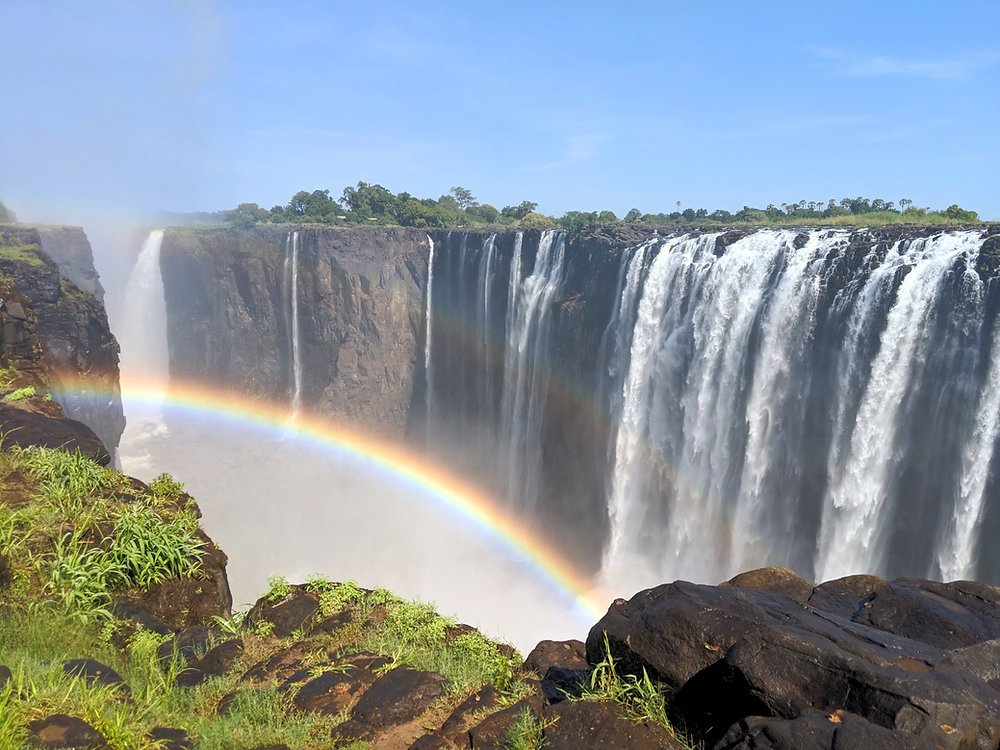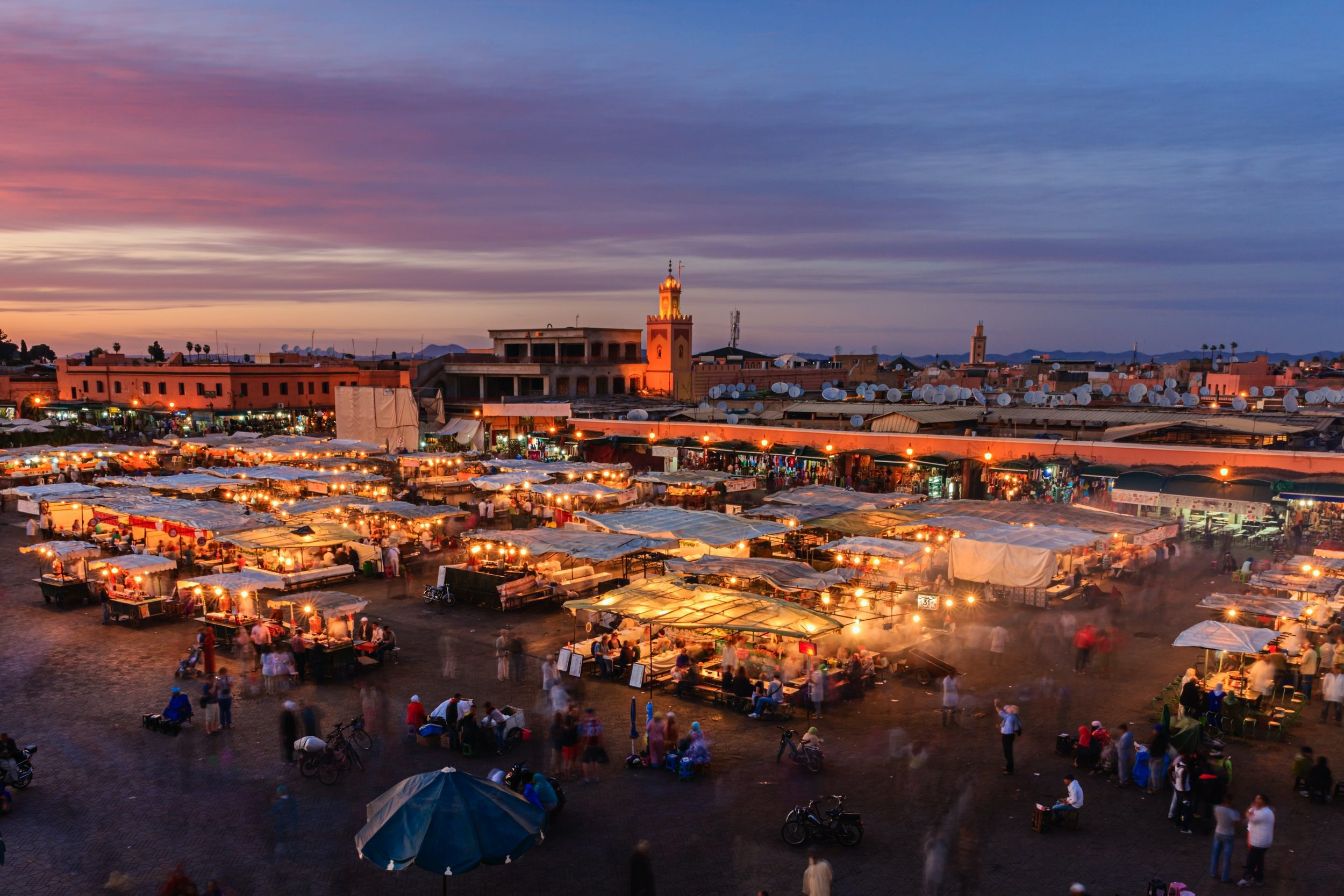10 most unique places to visit in Africa
The continent of Africa has a long, rich history and included in its story are the landmarks, cities, and villages that make it the beautiful place we know today. Here is a list delving into some of the most unique places to visit in Africa.
1) Nyungwe Forest National Park, Rwanda
Known as one of the biggest mountain rainforests in Africa, Nyungwe Forest is seen as the most preserved forest on the continent. It is home to 1000 wildlife species and is a prominent site for biodiversity in Rwanda.
There are also a number of fun things to do here—you can go trekking with chimpanzees that have been habituated to be friendly with humans. You can also try the 90-meter canopy walk, which is a whopping 50 meters above ground and is the first treetop forest canopy walk in all of East Africa. This walk allows you to see the monkeys hanging around the treetops, the birds flying around you, and the gorgeous view of the Nyungwe forest below you.
The park also offers 13 hiking trails, covering over 130 km of forest floor. The time length of these hikes can range anywhere from one to eight hours, which gives you options depending on your physical conditions, and allows you to see all the primates, birds, flowers, and ancient trees at your own pace.
2) Victoria Falls, Zambia and Zimbabwe
This beautiful gorge gets its “official” name from a Queen of England, but the name originally given to it by locals is Mosi-oa-Tunya, aka “The Smoke that Thunders”. This site is seen as one of the greatest waterfalls in the world and forms the Zambia-Zimbabwe border. The spray from the falls can be seen from miles away, and at the height of the rainy season, this waterfall dumps more than 500 million cubic meters of water per minute into a gorge below.
Across the Knife-edge Bridge, tourists can find a marvelous view of the Eastern Cataract, the Falls, and the Boiling Pot—the point at which the rivers turns and runs down the Batoka Gorge. On an especially misty day, you can probably also catch a rainbow nestled in the middle of the fall’s spray. (https://www.zambiatourism.com/destinations/waterfalls/victoria-falls/ )
3) Tsingy de Bemaraha National Park, Madagascar
Nestled in the majestic landscapes of Madagascar, Tsingy de Bemaraha National Park offers an awe-inspiring experience. This UNESCO World Heritage site is renowned for its unique limestone formations known as 'tsingy', which are razor-sharp pinnacles, formed through years of erosion, and create a dramatic and otherworldly landscape that is both challenging and exhilarating to explore.
You can navigate through the labyrinth of limestone via a series of bridges and walkways, offering a unique adventure and the opportunity to witness the park's diverse ecosystem up close.
Beyond its striking geology, the park is a haven for wildlife enthusiasts. It’s home to a variety of endemic species, including several types of lemurs, birds, and reptiles, making it a prime spot for wildlife watching. For those seeking more than just hiking and wildlife spotting, the park's surrounding areas offer glimpses into local life and culture. Canoe trips down the Manambolo River, for instance, provide a serene way to take in the scenery and observe local villages along the banks, offering a complete and enriching experience of Madagascar's natural and cultural beauty.
4) Makgadikgadi Pans, Botswana
Makgadikgadi Pans is right in the middle of the savanna of north-eastern Bostwana and it is one of the biggest salt flats on the planet. It is also all that is left of the formerly vast Lake Makgadikgadi.
But what is a pan, by the way? Botswana’s Pans are patches of desert land with thin-layers of blue-green algae as the only source of plant life. Only small amounts of wildlife live in these salty regions during the dry seasons because of the powerful, hot winds and the salt water. However, when the rain comes, the pan turns into a great habitat for wildlife, such as zebras and migratory birds, like ducks and geese.
For humans, there are a variety of things to do in the National Park—you can go on a Safari ride, you can go bird-watching, you can go on bush walks, where you’ll get to see lions, cheetahs, giraffes, elephants, and so many more interesting animals.
5) Mount Mulanje, Malawi
Malawi locals nickname this mountainous site the “island in the sky” because compared to other peaks around the world, Mulanje seems to hover over the land that surrounds it, giving it a somewhat fantastical aura.
The mountain is fairly reachable from Malawi’s capital and visitors will find an attractive network of trails that give them the option to walk casually along the mountain or take on a serious trek. Because the mountain is so huge, tourists can spend hours exploring its river pools and small, hidden waterfalls, but you could also take a few days to scope out the whole massif, which makes camping an attractive option to save time, money, and to fully immerse yourself in the Mulanje experience.
Locals may also share stories and legends with visitors, advising them to be respectful and stay on the good side of the mountain spirits. But if you’re not a fan of camping, or the idea of being visited by a mountain spirit while you sleep concerns you, at the base of the mountain are a few hotels and guest houses.
6) Deadvlei, Namibia
This striking natural wonder in the heart of Namibia's Namib-Naukluft Park is a destination that leaves an indelible mark on its visitors. This surreal landscape, characterized by its white clay pan, is surrounded by some of the tallest sand dunes in the world, creating a stark, almost alien contrast. The name Deadvlei, which means "dead marsh", is a hauntingly accurate description. The area was once a fertile marsh, fed by the Tsauchab River, but as the climate changed, drought hit. The remaining skeletons of ancient camel thorn trees, estimated to be around 900 years old, stand eerily against the bright white pan, their blackened, lifeless forms creating a dramatic and photogenic tableau against the reddish dunes and blue skies.
Visitors to Deadvlei can expect an experience that is as challenging as it is rewarding. Access to the area typically involves a drive through the desert followed by a trek across sandy terrain, an adventure in itself. Once there, tourists are often struck by the profound silence and the surreal beauty of the landscape. Photography enthusiasts will find endless inspiration in the stark contrasts and interplay of light and shadow, especially at sunrise or sunset when the colors are particularly vivid.
Apart from photography, visitors can also engage in dune hiking; climbing the adjacent 'Big Daddy', one of the highest dunes in the world, offers a physically demanding yet satisfying activity with panoramic views of the desert. While Deadvlei does not offer traditional wildlife sighting experiences, its unique and haunting beauty provides a contemplative and almost spiritual experience, making it a must-visit for those seeking the unusual and profound in nature.
7) Djemaa el Fna, Morocco
Unlike the previously mentioned places, Djemaa el-Fna isn’t a huge landmark or mountainous hikers haven, but a cultural square in the middle of a city. Founded in the 11th century, this space has become a symbol of the city of Marrakesh with a focus on Moroccan culture expressed through religion, music, and many forms of art.
It is a Mecca of sorts for both locals and those visiting from outside the country. Throughout the day and deep into the night, you can discover a variety of services and places, such as fortune-telling, henna tattooing, performances by poets, musicians, and dancers, sermons by preachers, as well as shops selling fruit and traditional Moroccan cuisine.
8) Bazaruto Archipelago, Mozambique
As a result of decades of war for independence, Mozambique has intentionally shielded these six islands of the Archipelago from exploitation, such as the drilling for natural gas that has been taking place in other parts of the country.
Local fishing villages can still search the waters, but the absence of commercial fishing has helped keep reefs intact and allowed visitors to simply enjoy the warm, clean waters and marvel at the sea creatures near the surface.
The islands also have a history of exclusive tourism that goes back to the 1950s when a luxury hotel named “Paradise Island” was created to cater to the world’s elite. The islands’ luxurious perception was due to Mozambican beaches being seen as glamorous destinations for elites to lay out in the sun and feel sexy. Even pop culture, like Bob Dylan’s “Mozambique” fed into this notion. But once the country sought its independence, the glamorous facade fell apart and the hotel was left to deteriorate into ruins.
However, tourism today is still intact. Visitors can stay in a few luxury island resorts throughout the archipelago that can cost $1000 or more a night. Businesses in the area also offer horse safaris to explore the beaches of Vilankulo and nearby communities.
9) Nzulezo, Ghana
Located about 6.5 hours from the capital city of Accra, this Ghanaian village gets its name from the local language Nzema, and it means “surface of water”. Houses in Nzulezo are constructed from raffia palm branches and the village itself resides over a shallow body of water.
Over 500 Ghanaian citizens call this village home today, but its beginnings date back to the 15th century when the very first inhabitants migrated from Mali, leaving behind a land ravaged by a war with the Mande people of West Africa. But the more interesting tale is a legend of a god who appeared as a snail to lead the ancestors of Nzulezo to Lake Tandane. This god instructed the first residents to build their homes on the water for safety and security.
Tourism began in the village about 20 years ago—most travel from Ghanaian towns, specifically to drink the village’s alcohol, which is praised as better-tasting than alcohol from other places.
10) Lekki Conservation Centre, Nigeria
Due to its high level of species, Lekki Conservation Centre (or LCC, for short) has slowly become one of Africa’s most prominent and diverse nature parks. The conservation center is hailed as a major role model for its preservation of biodiversity and for upholding natural and scientific values in southwestern Nigeria.
The center features a 401-meter-long canopy walk—the longest canopy walk in all of Africa and an incredible engineering feat. With portals connecting six towers, visitors can get a bird’s eye view of all the wildlife that occupy the area.
Other recreational activities and places within the Center include a nature station, 6 and 8-seater family huts, koi and tilapia ponds, beach volleyball, zip lines, and barbecue spots. Whether you’re going alone, with a small group of friends, or family members, it’s a place that will keep you busy for a while.









